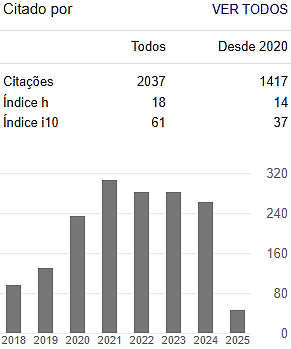Sorghum, pigeonpea and Marandu grass intercropping: more silage and greater quality
Keywords:
Sorghum bicolor, Urochloa brizantha, Cajanus cajan, Tropical grassAbstract
Lack of forage in the winter dry season is a concern for cattle production in tropical Brazil. Pasture renovation with silage production might solve an immediate concern for forage production and help develop an improved pasture condition after cropping. The objective was to compare the production and quality of monocropped sorghum and sorghum intercropped with Marandu grass and/or pigeonpea in two row spacings. The experiment was carried out on a sandy Oxisol in São Paulo state in Brazil with an experimental design of a 2 x 4 factorial arrangement with four replications. Treatments were: monocropped sorghum, sorghum intercropped with U. brizantha, sorghum intercropped with C. cajan (cv. BRS Mandarim), and sorghum intercropped with Urochloa+ pigeonpea with 0.45 and 0.90 m row spacings. Greatest forage production was with 0.45-m spacing for monocropped sorghum and dual-species intercropping. With 0.90-m spacing, greatest production was for Sorghum+Urochloa. Sorghum+Urochloa+Cajanus intercropping provided the highest concentrations of crude protein in silage, regardless of row spacing. An increase in ensiling time reduced quality of the silage due to a decline in crude protein and TDN and an increase in fibers. However, the reduced spacing between lines with the inclusion of legumes resulted in a greater amount of silage with a higher concentration of protein. Successful short-term production of high-quality silage could be obtained when sorghum is integrated with Cajanus, and impacts on pasture renovation continue to be evaluated.
Downloads
Downloads
Published
Issue
Section
License
Copyright (c) 2023 Colloquium Agrariae. ISSN: 1809-8215

This work is licensed under a Creative Commons Attribution-NonCommercial-NoDerivatives 4.0 International License.

